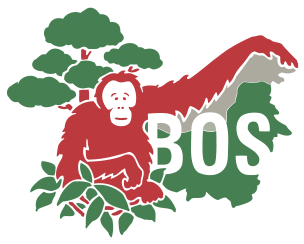Study finds potential profits in conservation
Study finds potential profits in conservation
The Associated Press: Michael Casey: 6 June 2009
BANGKOK (AP) — Selling credits for the billions of tons of carbon that are locked in Indonesia’s tropical rain forests could be as profitable as converting these areas into palm oil plantations, a study released Friday found.
The study, in the current issue of the peer-reviewed journal Conservation Letters, also found that conserving the 3.3 million hectares (8.2 million acres) that are slated to become plantations on Kalimantan, on the island of Borneo, would boost the region’s biodiversity. The 800 proposed plantations that were studied contain 40 of the region’s 46 threatened mammals including orangutans and pygmy elephants, the study found.
“Our study clearly demonstrates that payments made to reduce carbon emissions from forests could also be an efficient and effective way to protect biodiversity,” said Oscar Venter, a conservation biologist at the University of Queensland in Australia and the study’s lead author. “We now need to see policy discussions catch up with science because at the moment the potential co-benefits of linking forest protection to biodiversity are not getting the attention they deserve.”
Under an international climate change agreement which would replace the Kyoto Protocol in 2012, governments are expected to create a framework allowing countries to get compensated for protecting their forests.
Among the scenarios being considered are providing countries with direct financial assistance for reducing their emissions from forests or allowing them to gain credits, which they could sell on an international carbon market to companies that have exceeded their allotted carbon cap.
Under the latter scenario, the study concluded that conserving forests would be more profitable than clearing them for palm oil if the credits could be sold for $10 to $33 per ton. Currently, the rate per ton is around $20, the study said.
A carbon trading market — or “cap-and-trade” system — works much like any commodities market except that traders make their fees selling a ton of carbon dioxide instead of corn or copper. At this point, the carbon dioxide traded for the most part comes from industrial sources.
Countries that agree to reduction targets are given permits for an amount of allowable carbon dioxide emissions which are passed onto businesses. Companies can choose to cut their emissions by retrofitting a factory and selling their permits for a profit — or continuing to pollute and buying additional units of carbon dioxide on the open market.
The World Bank’s Timothy Brown, a natural resources management specialist in Indonesia, said the calculations seemed reasonable based on the expectation of growth within the carbon markets over the next 10 to 20 years.
But he said there still remains many questions about setting up the system known to avert deforestation and convincing local governments and companies to abandon the much greater certainty of gaining profits from palm oil for the much less certain prospect of earning money trading carbon credits.
“It’s not only that the carbon markets are uncertain but the guy trying to access the carbon market is uncertain how to do it,” Brown said. “He knows where to go to sell his oil palm. He knows these people. With the carbon market, who does he call? It’s not a smooth and frictionless market.”
Palm oil can be found in half of supermarket products from cosmetics to ice cream, according to the industry, and demand has risen sharply in China, India and the United States. The industry is also expected to grow as countries mandate the use of biofuels as part of a cleaner energy mix.
But as its profile has risen so has the controversy surrounding the methods used to farm palm oil. Plantation companies in Indonesia and Malaysia — which together produce 87 percent of all palm oil — have come under fire for leading to deforestation that contributes to the demise of animals like orangutans and Sumatran elephants.
Indonesia, where already 15.1 million acres are covered by plantations, has aggressive expansion plans.
Frances Seymour, director general of the Center for International Forestry Research in Indonesia which also took part in the study, said the new data should help make the case that forest have to be part of the solution to reducing greenhouse gas emissions.
“Ultimately, our goal is to help fashion an agreement that will allow tropical forests to become a part of a more comprehensive climate agreement — one that will reduce emissions, as well as produce co-benefits,” she said in a statement.
Other groups that took part in the study included The Nature Conservancy, the Great Ape Trust and the Consultative Group on International Agriculture Research.
Copyright © 2009 The Associated Press. All rights reserved.





